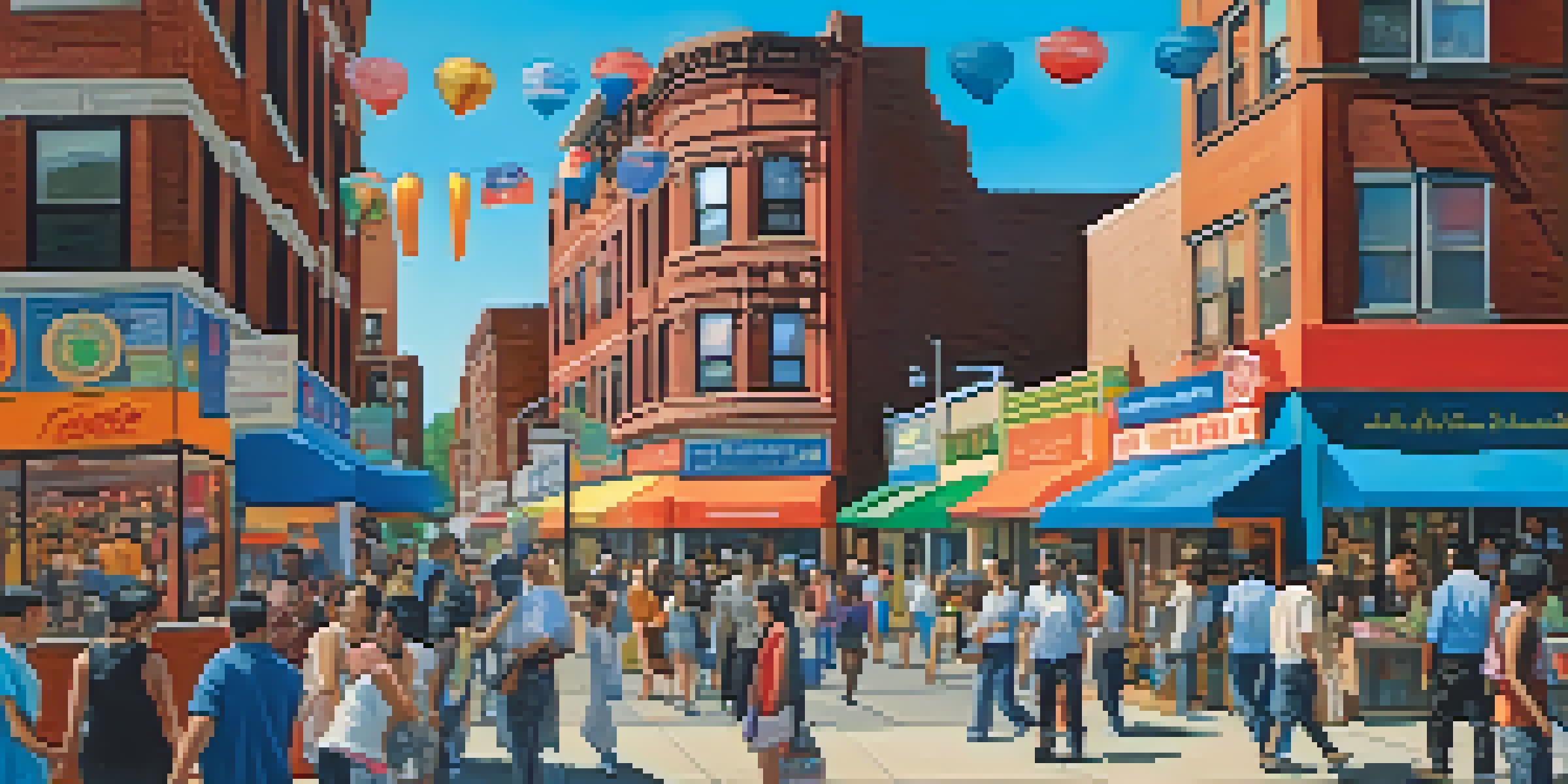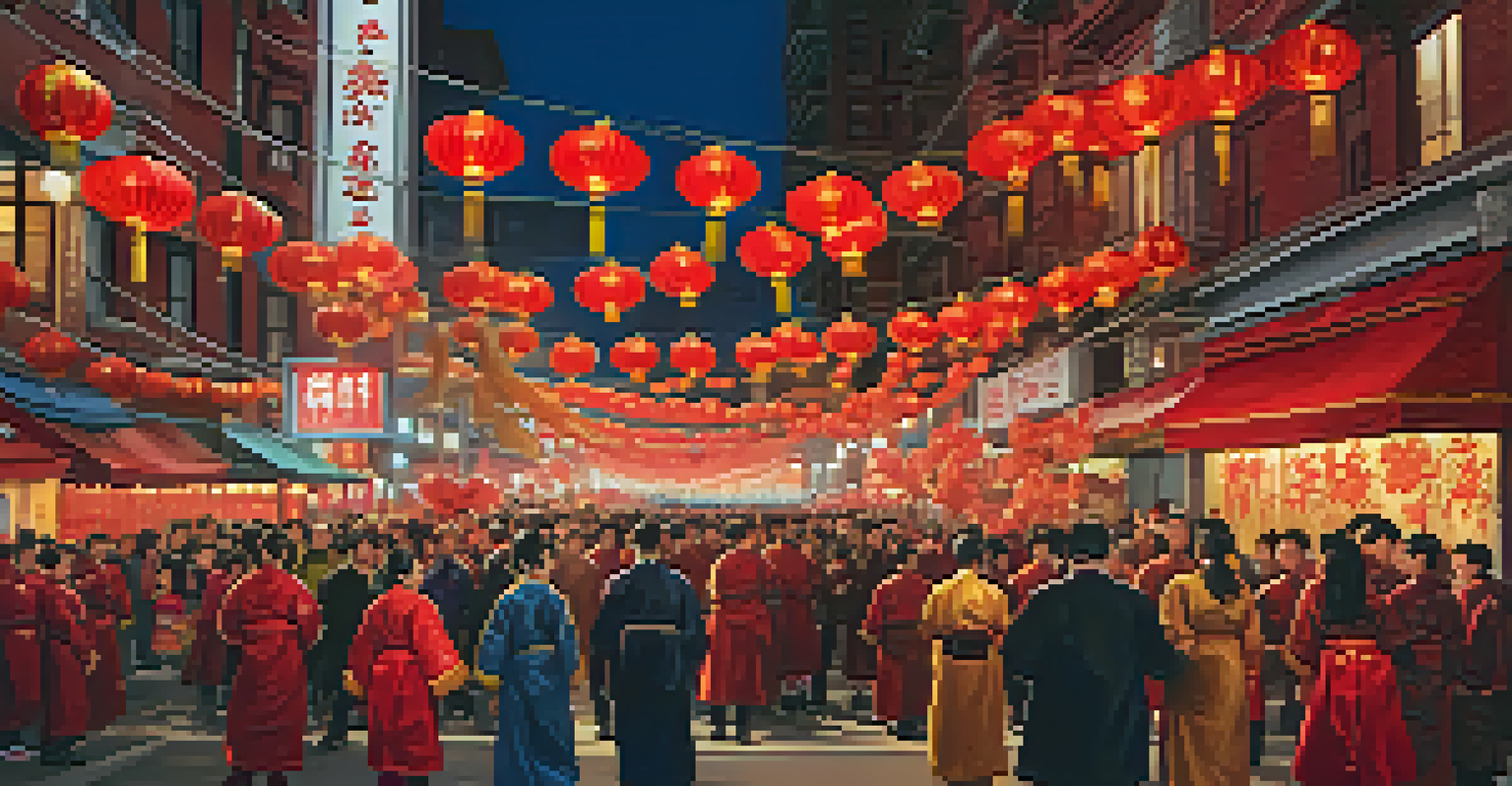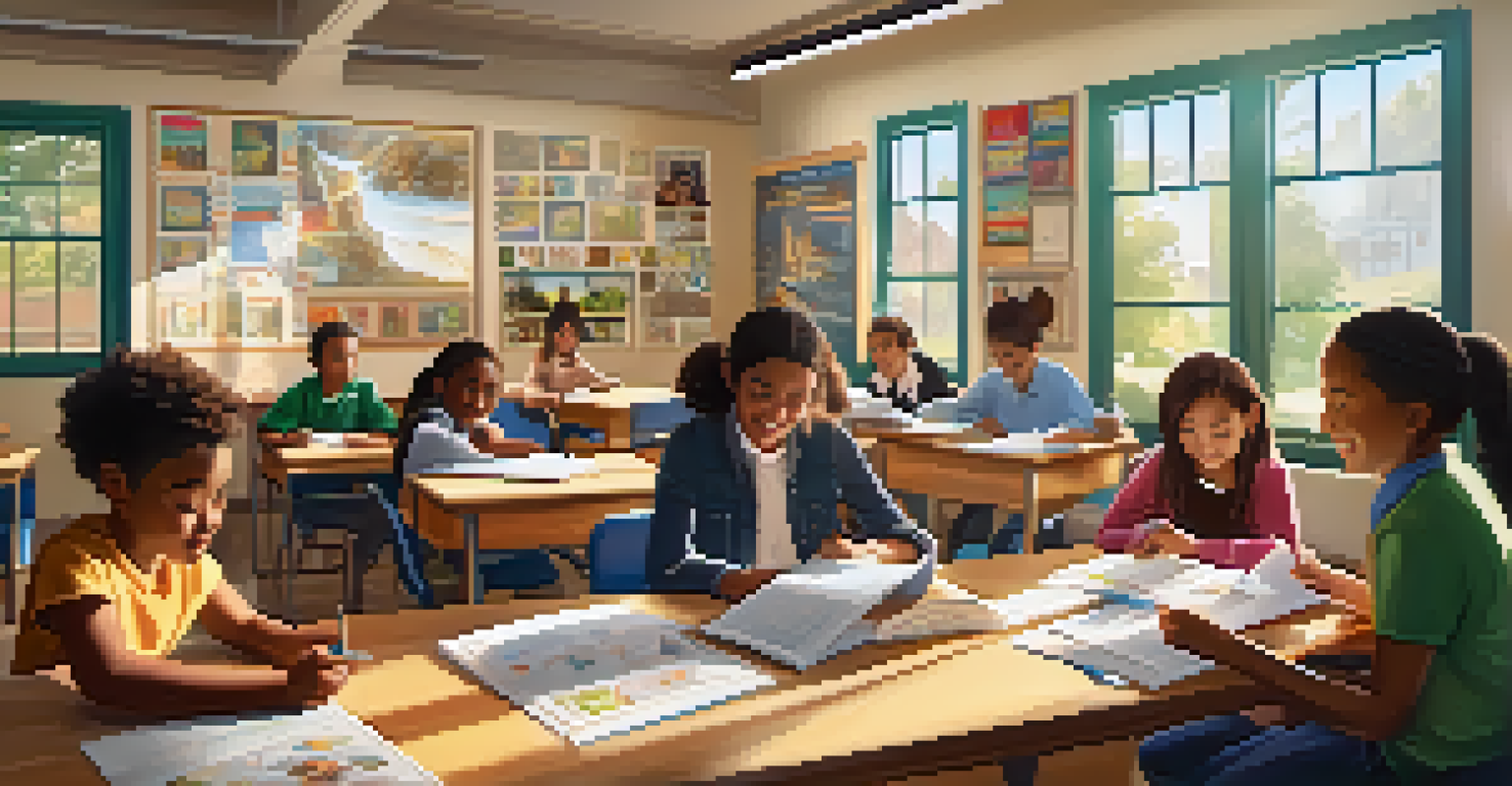The Role of Refugees in Shaping New York City's Identity

A Melting Pot: The Diverse Tapestry of Refugees in NYC
New York City is often described as a melting pot, and this is largely due to the contributions of refugees. Each wave of newcomers has brought unique traditions, languages, and perspectives that enrich the city's culture. For instance, neighborhoods like Astoria and Jackson Heights showcase a mix of Greek, Colombian, and South Asian influences, creating vibrant communities that reflect their rich heritages.
New York is not just a city; it's a tapestry of cultures woven together by the threads of hope and resilience.
The integration of refugees into the fabric of NYC has led to a dynamic cultural exchange. Festivals, restaurants, and local businesses flourish, showcasing global cuisines and customs that are increasingly part of the city's identity. This cultural diversity not only attracts tourists but also fosters a sense of community among residents, enhancing social cohesion.
Moreover, the presence of refugees in NYC serves as a reminder of the city's long-standing role as a sanctuary for those seeking safety and opportunity. Their stories of resilience and perseverance resonate with the core values of New York, reinforcing the idea that everyone, regardless of their background, can contribute to the city's narrative.
Economic Contributions: Refugees as Vital Workforce Members
Refugees play a crucial role in New York City's economy, filling gaps in various industries. Many refugees bring skills, experiences, and a strong work ethic that are invaluable to local businesses. For example, the healthcare sector often relies on multilingual staff who can connect with diverse patients, ensuring better care and understanding.

Additionally, refugees frequently start their own businesses, contributing to job creation and innovation. These entrepreneurial efforts not only boost the economy but also help revitalize neighborhoods struggling with economic downturns. A notable example is the rise of food trucks and small eateries run by refugee entrepreneurs, adding flavor and diversity to NYC's culinary scene.
Refugees Enrich NYC's Culture
The diverse traditions and festivals brought by refugees enhance New York City's cultural landscape and promote inclusivity.
Furthermore, the economic impact of refugees extends beyond immediate job creation. By participating in the workforce and paying taxes, refugees contribute to the city’s revenue, supporting essential services like education and infrastructure. Their economic integration is a testament to the city's ability to evolve and thrive through diversity.
Cultural Enrichment: Festivals and Traditions Brought by Refugees
The cultural landscape of New York City has been significantly enriched by the traditions and festivals of its refugee communities. Events such as the Lunar New Year Parade in Chinatown and the Diwali Festival in Queens celebrate the customs of various cultures, inviting all New Yorkers to participate and learn. These celebrations not only honor heritage but also promote inclusivity and understanding across different communities.
The greatness of a community is most accurately measured by the compassionate actions of its members.
Through such events, refugees share their stories and traditions, fostering a greater appreciation for their cultures. This exchange helps dismantle stereotypes and build bridges between diverse groups, creating a more cohesive city. For example, food festivals allow New Yorkers to taste authentic dishes, sparking conversations and connections that transcend cultural barriers.
Moreover, these cultural contributions enhance New York City's reputation as a global city. The richness of its cultural offerings attracts tourists and residents alike, reinforcing the idea that diversity is not just an asset but a defining characteristic of the city.
Educational Contributions: Refugees in New York City Schools
Refugees also make significant contributions to the educational landscape of New York City. Many refugee students bring diverse perspectives and experiences that enrich classroom discussions, fostering a more global understanding among their peers. This cultural exchange in schools helps prepare all students for an increasingly interconnected world.
Additionally, the challenges faced by refugee students often inspire educational programs aimed at promoting inclusivity and support. Schools have implemented initiatives to help refugee students adapt, such as language assistance programs and mentorship opportunities. These resources not only aid academic success but also encourage social integration.
Economic Impact of Refugees
Refugees significantly contribute to NYC's economy by filling workforce gaps and starting new businesses that invigorate local communities.
Moreover, the success stories of refugee students can serve as powerful motivators for others. When these students excel and share their journeys, they inspire fellow classmates to overcome their own challenges, creating a ripple effect of empowerment within the community.
Activism and Advocacy: Refugees Shaping Social Justice Movements
Refugees have also played a pivotal role in shaping social justice movements in New York City. Many have become advocates for immigrant rights, using their voices to highlight the challenges faced by their communities. Through grassroots organizations, they work to create awareness and push for policies that support refugees and immigrants.
These advocacy efforts not only benefit refugees but also strengthen the fabric of the city as a whole. When refugees fight for their rights, they often address broader issues of equity and justice that affect all marginalized communities. This intersectionality creates a united front, amplifying the impact of their advocacy work.
Furthermore, by sharing their stories and experiences, refugees humanize the issues at stake, fostering empathy and understanding among the larger population. Their activism encourages New Yorkers to engage in meaningful conversations about immigration, social justice, and the shared responsibility of building an inclusive society.
Urban Transformation: Refugees and Neighborhood Revitalization
The arrival of refugees has often led to the revitalization of neighborhoods across New York City. As they settle in, they bring new energy and ideas that can transform local economies and community dynamics. For instance, areas that were once overlooked can flourish with the establishment of new businesses, community centers, and cultural events.
This urban transformation not only provides economic opportunities but also enhances the quality of life for all residents. Parks, public spaces, and recreational activities often emerge in response to the needs of these growing communities, making neighborhoods more vibrant and inviting. The revitalization efforts can lead to a renewed sense of pride and belonging among long-time residents as well.
Advocacy for Social Justice
Refugees are vital advocates for social justice in NYC, using their experiences to highlight broader issues of equity and community rights.
Moreover, the presence of refugee communities can encourage a spirit of collaboration and solidarity among neighbors. Shared experiences and challenges create opportunities for dialogue and understanding, ultimately fostering a stronger, more interconnected community.
Challenges Faced: Overcoming Obstacles in NYC
Despite their numerous contributions, refugees in New York City face significant challenges. From language barriers to housing insecurity, the road to integration can be fraught with obstacles. Many refugees arrive with limited resources and must navigate a complex system to access services and support.
However, community organizations and local governments are working tirelessly to address these challenges. Initiatives aimed at providing language classes, job training, and housing assistance are essential in helping refugees rebuild their lives. These programs not only offer practical support but also foster a sense of belonging within the community.

Moreover, raising awareness about these challenges is crucial for fostering empathy and support among the broader population. By highlighting the resilience and determination of refugees, New Yorkers can come together to create an environment that values diversity and promotes inclusivity.